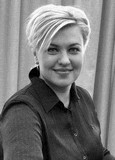THE USE OF PROFESSIONAL ARTIFICIAL TURF FOR SKI SLOPES AS AN OPPORTUNITY TO IMPROVE THE EFFICIENCY OF THE TRAINING PROCESS OF CROSS-COUNTRY SKIERS
Keywords:
cross-country skiing, artificial turf, snow, biomechanical structure, skiing, highly qualified athlete.Abstract
Objective of the study was to scientifically substantiate the use of artificial turf, which replaces snow, based on the analysis of changes in the kinematic characteristics of the ski course during the movement of an athlete.
Methods and structure of the study. A comparative characteristic of the biomechanical structure of the athlete's skiing was carried out with a change in coverage according to the following criteria: speed, length and frequency of steps, the time of performing the phases of the cycle of movements, angular characteristics during the period of squatting and repulsion of the skier, angular velocities of movement in the joints were calculated. An analysis was made of the change in the kinematic characteristics of the running technique using the example of a simultaneous two-step skating run.
Results and conclusions. When an athlete passes a distance in various modes (training, competitive), there is a slight change in the kinematic characteristics of the course and, as a result, changes in the ratio of various modes of work (inferior (squatting), overcoming (repulsion) of work and relative relaxation). In the training mode under conditions of natural turf, the ratio of biomechanical characteristics has the form - 0.25:0.33:0.40, in conditions of artificial turf - 0.27:0.35:0.46. In the competitive mode, under natural turf conditions, the ratio of biomechanical characteristics is 0.24:0.24:0.36, under artificial turf conditions - 0.24:0.26:0.42. Thus, with the correct location of the ski treatment zones with a gliding compound, the skier / biathlete will not experience critical technical and biomechanical changes in the technique of movement when using artificial turf, which will make it possible to organize the training process at the preparatory stage of training athletes in conditions as close as possible to the competition. preparation stage.
References
Khromov V.A., Golovachev A.I., Tarasova L.V., Pankov V.A. Metodika razvitiya spetsialnoy vynoslivosti kvalifitsirovannykh lyzhnikov-gonshchikov na osnove ucheta individualnykh osobennostey fizicheskoy podgotovlennosti i trebovaniy sorevnovatelnoy deyatelnosti [Methodology for the development of special endurance of qualified cross-country skiers on the basis of taking into account the individual characteristics of physical fitness and the requirements of competitive activity]. Vestnik sportivnoy nauki. 2018. No. 4. pp. 16-18.
Prikhodko E.N. Osobennosti postroyeniya trenirovochnogo protsessa vysokokvalifitsirovannykh lyzhnikov-gonshchikov v podgotovitelnom periode [Features of the construction of the training process of highly qualified ski racers in the preparatory period] Fizicheskaya kultura i sport v sovremennom obshchestve [Physical culture and sport in modern society]. Proceedings national scientific-practical conference. S.S. Dobrovolsky [ed.]. 2018. pp. 238-243.
Novikova N.B., Zakharov G.G. Osobennosti sovremennoy tekhniki lyzhnykh khodov i metodicheskiye priyemy individualnoy korrektsii dvizheniy [Features of modern skiing technique and methodological methods of individual movement correction]. Methodological guide. St. Petersburg: FGBU SPbNIIFK publ., 2017. 72 p.


